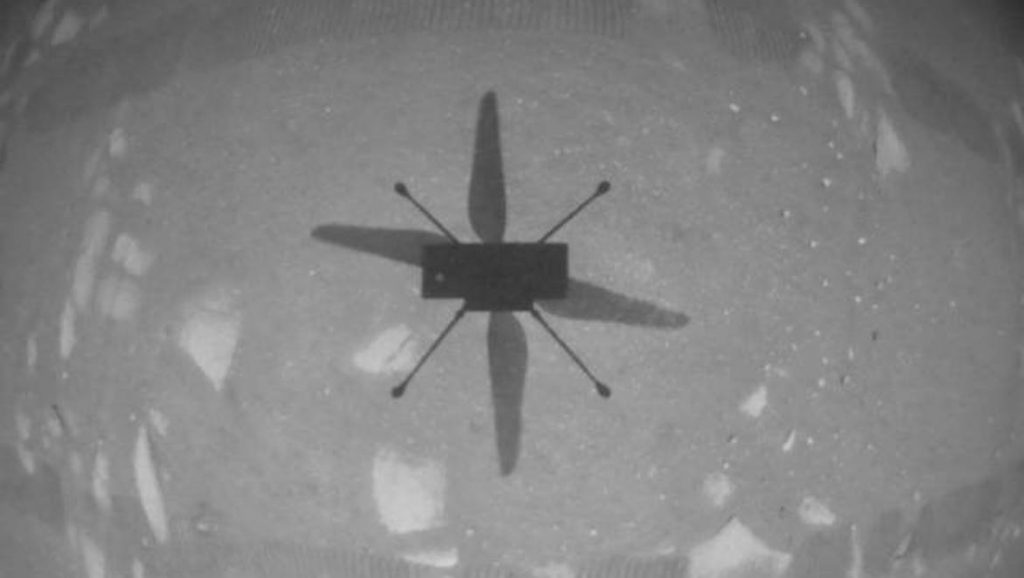
NASA is preparing for its Mars Helicopter, Ingenuity, to take its game-changing fifth flight on Friday.
According to the space agency, Ingenuity will take again to Martian skies at 3:26pm EDT on Friday, with its flight data expected to hit NASA’s Jet Propulsion Laboratory (JPL) in southern California by 7:31pm EDT that same day.
According to the engineers behind Mars’ first rotorcraft, the fifth flight will be a momentous one indeed.
While Ingenuity is set to take off again from Wright Brothers Field, an airfield that now sits in Jezero Crater, it will, for the first time, not be returning to its take-off spot.
Instead, Ingenuity is set to land elsewhere, about 129 metres from where it usually takes off, retracing its route from its fourth test flight.
However, before it lands on its new turf, the rotorcraft will soar to a new height of 10 metres, to take additional images of the area around and below it.
After 110 seconds, Ingenuity will have successfully completed its first one-way trip, and begin its new mission, to push the boundaries of the rotorcraft’s abilities, and explore the foreign planet ahead of its companion, the Perseverance rover.
The Mars rover carries Ingenuity’s communications base station, so while it’s important the two stay nearby, Ingenuity will now be travelling ahead of Perseverance, though keeping in the same direction.
The fourth test flight saw NASA and JPL scout for a flat surface in the general direction of the Rover’s next movements in order to split the two further apart. NASA is confident the new landing spot is an ideal spot for Ingenuity to land.
NASA gladly claimed that despite these tests pushing Ingenuity’s limits, “our helicopter is even more robust than we had hoped”.
“The power system that we fretted over for years is providing more than enough energy to keep our heaters going at night and to fly during the day,” the Ingenuity team said.
“The off-the-shelf components for our guidance and navigation systems are also doing great, as is our rotor system. You name it, and it’s doing just fine or better.”
Ingenuity is a solar-powered rotorcraft vehicle that boasts twin propellers, a metallic body, four legs, and weighs just under two kilograms (on Earth).
It was sent aboard NASA’s Perseverance Mars rover in February to complete one mission: prove that it could fly in Mars’ atmosphere, which varies significantly from that of Earth.
While Mars has much less gravitational pull than Earth, its atmosphere is just 1 per cent as dense, making it difficult to generate lift.
As such, the engineers of Ingenuity gave the aircraft four-foot long rotor blades that spin at higher speeds than would be required on Earth.












